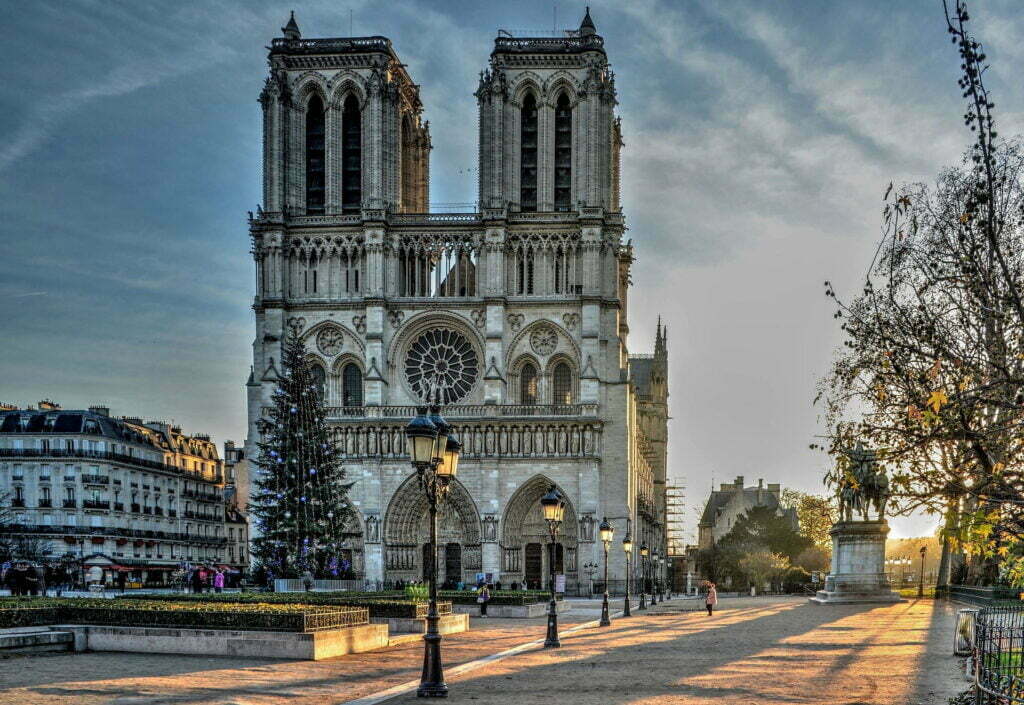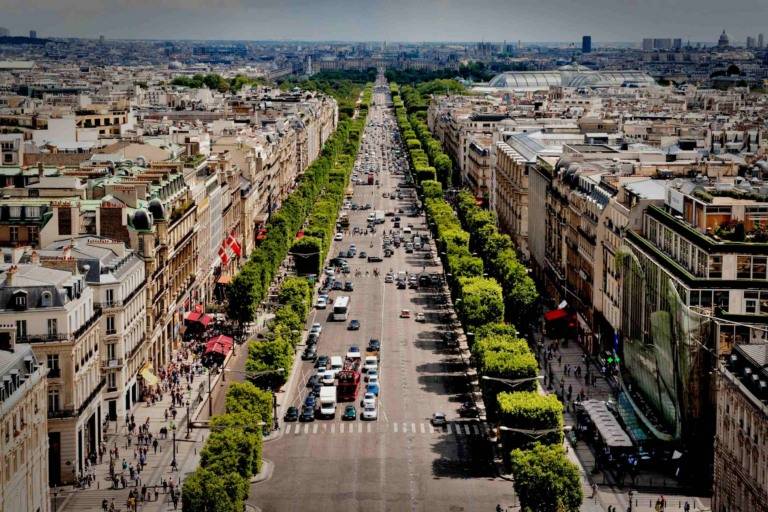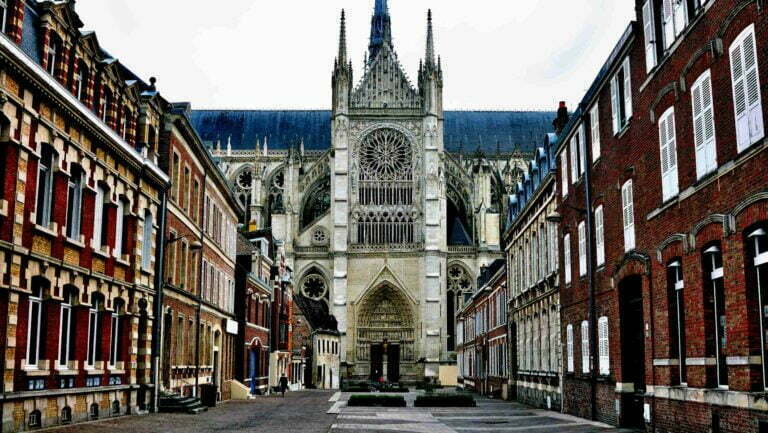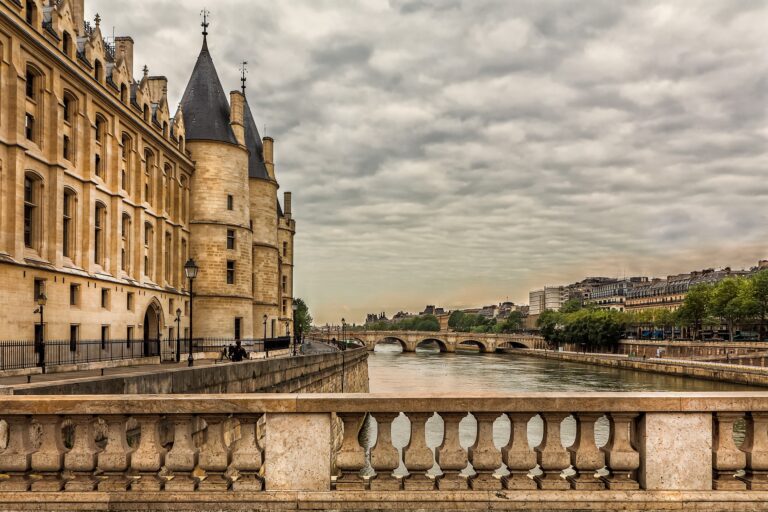The Notre Dame Cathedral is in Paris, France. It is at the eastern end of the Île de la Cité. Since 1991, it has been a UNESCO World Heritage Site. The Notre Dame Cathedral, also called Notre-Dame de Paris, is a church in Paris. It is the most well-known Gothic cathedral from the Middle Ages. It is also important because of its size, age, and architecture.
Where is Notre Dame Cathedral
Before Notre-Dame was built, there were two churches built on the same spot. Before that, there was a Gallo-Roman temple to Jupiter. Maurice de Sully, who was the Bishop of Paris, was a big reason why the cathedral was built.
When Was Notre Dame Built
Around 1160, he thought it would be a good idea to combine the ruins of the two older basilicas into one larger building. Pope Alexander III built Notre Dame in the year 1163. In 1189, the big cathedral was dedicated.
Notre Dame Facts and History
By 1250, the choir, western facade, and nave were done. Over the next 100 years, porches, chapels, and other decorations were added. The Notre-Dame Cathedral is made up of a choir and an apse. With a short transept and double aisles and square chapels on either side of the nave.
During a repair in the 19th century, the central spire was added. Because it was so fragile, the original was taken apart and thrown away in the 18th century. The plan of the cathedral’s interior is 427 feet by 157 feet (130 meters by 48 meters), and the roof is 115 feet high (35 meters).
Notre Dame Cathedral Restoration
Two big early Gothic towers sit on top of the west side of the building (1210–50). It is made up of three levels and has beautiful early Gothic sculptures on its doors. A row of Old Testament Kings stands on top of each door. The two towers are 223 feet (68 meters) tall.
But the spires that were supposed to go on top of them were never built. The apse has huge clerestory windows that were added between 1235 and 1270. It is held up by single-arch flying buttresses in the more daring Rayonnant Gothic style, which are known for their elegance and boldness. The glass in the three large rose windows of the cathedral was made in the 1300s.
Notre Dame Cathedral Fire Cause
Over the years, Notre-Dame Cathedral has been broken and lost its beauty. Napoleon, who made himself Emperor of the French in the cathedral in 1804, saved it from being torn down after the French Revolution. Eugène-Emmanuel Viollet-le-Duc, a French architect, brought Notre-Dame back to its former glory in the middle of the nineteenth century. People think that the success of Victor Hugo’s historical novel Notre-Dame de Paris (1831).
The location, which is set in the cathedral, is thought to have prompted the repairs. During renovations of the cathedral in 2019, a fire broke out in the attic and destroyed much of the roof, the spire from the 19th century by Viollet-le-Duc, and some of the rib vaulting.
Cathédrale Notre-Dame De Paris Facts
The Notre Dame Cathedral, also called Our Lady of Paris, is one of the most well-known places in the city. With a long history that goes back more than 850 years. It has grown tall enough to hold the coronation of the most powerful man in the world, but it is about to be torn down. Here are some facts about this time in history that will help you understand it.
Louis VII Established Notre Dame
The building of Notre Dame was ordered by King Louis VII, who ruled from 1120 to 1180. He wanted this beautiful cathedral to show how much better Paris was as a leader in French Gothic architecture. Louis’s wife was Eleanor of Aquitaine.
Eleanor married Henry Plantagenet, who became Henry II, even though they didn’t have any kids. Most people know Louis because he started the University of Paris. He was in charge of the disastrous Second Crusade and worked to make Gothic architecture popular in France.
Notre Dame Cathedral Gothic Architecture
The flying buttress was one of the most important changes to Gothic architecture that Notre Dame showed off. The weight of the roof structures pushed out and down before the buttresses, so the walls had to be strong enough to hold them up. Outside the building, the flying buttresses were like ribs that held up the walls.
This made the walls taller and thinner, which made it possible for big windows. The buttresses were fixed up in the 14th century. With ones that are bigger and stronger, with a 15-meter gap between the walls and the counter-supports.
At Notre Dame, an English King was Crowned
On December 16, 1431, Henry VI of England, who was only 10 years old, was crowned King of France at Notre Dame. After Henry V won the Battle of Agincourt in 1415, this happened. It gave him more power in the Treaty of Troyes in 1420. At Troyes, it was agreed that Henry V would be the next King of France. He married Catherine of Valois, who was the daughter of King Charles VI, to seal the deal.
Henry V died of dysentery in 1422, leaving his nine-month-old son the crown. He was never able to take back the power his father had in France. In fact, Notre Dame was only used for crowning kings and queens. Because the French were in control of Reims Cathedral, which was usually where kings were crowned.
Emmanuel Bell Notre Dame
Emmanuel is the name of the Biggest Bell. The two 69-meter-high towers on the west side of the building were built in the early 1300s. In the south tower, there are ten bells. The largest one is called Emmanuel, and it is a bourdon. It has been rung to remember the coronation of kings, the visit of the pope, the end of world wars, and the events of September 11, 2001.
The Cult of Reason was Honored
After the French Revolution in 1789, the government took over Notre Dame. The heads of the 28 sculptures of biblical kings were cut off, and many of the treasures were destroyed or taken. The cathedral was turned into a huge place to store food. In 1793, it was called the Cult of Reason. After that, it was called the Cult of the Supreme Being. The French Revolutionaries tried to make France less Christian.
Napoleon Crowning Himself Emperor
In the Concordat of 1801, Napoleon Bonaparte said that Notre Dame should be given back to the Catholic Church. In three years, Napoleon would be crowned Emperor of France there. It took place with Pope Pius VII there. Also, different customs and traditions from the Carolingian era, the old regime, and the French Revolution were mixed together.
Napoleon took the laurel wreath and put it on his head while the Pope was in charge of the party. He turned around to crown Joséphine, who was kneeling next to him. The outside of the cathedral was bleached, and the inside was redone in a neoclassical style to make it look more modern.
Victor Hugo Notre Dame de Paris
Victor Hugo wrote a story to save Notre Dame from Destruction. During the Napoleonic Wars, Notre Dame was damaged so badly that people in Paris thought about tearing it down. The Hunchback of Notre Dame was written by Victor Hugo and came out in 1831. It was meant to bring more attention to the old cathedral and bring back interest in Gothic architecture, which had lost favor. Right away, it was a big hit. In 1844, King Louis Philippe told people to fix up the church.
Notre Dame Cathedral Location
Notre Dame is the Center of Paris. Notre Dame Cathedral is the official center of Paris. The point zéro des routes de France is a small plate on the square in front of the church that has a compass on it. All distances to and from Paris are measured from this point.
Notre Dame Burning Date
The Spire was Destroyed by a Fire in 2019. At 6:18 p.m. on April 15, 2019, the cathedral caught fire, which damaged the spire, wood frame, and lead roof. Half an hour after the fire alarms went off, the fire truck showed up. At 7:50 p.m., the spire fell and dumped 750 tons of stone and lead on the area around it. Reports say that the incident was eventually linked to ongoing restoration work. At 9:45 p.m., the fire was finally brought under control.
Notre Dame Cathedral Restoration Progress
After the fire, President Macron said, “Notre Dame is our history, our literature, a part of our psychology, the site of all our major events, our epidemics, our wars, our liberation’s, the center of our lives.” So, tonight, I say with all honesty, “We will fix it together.”
The day after Macron’s speech, €880 million was promised to help pay for the rebuilding of the cathedral. This is true even though many architects have come up with different designs, including one with a pool. Lastly, the French government said that the original look of the Middle Ages will be brought back.






